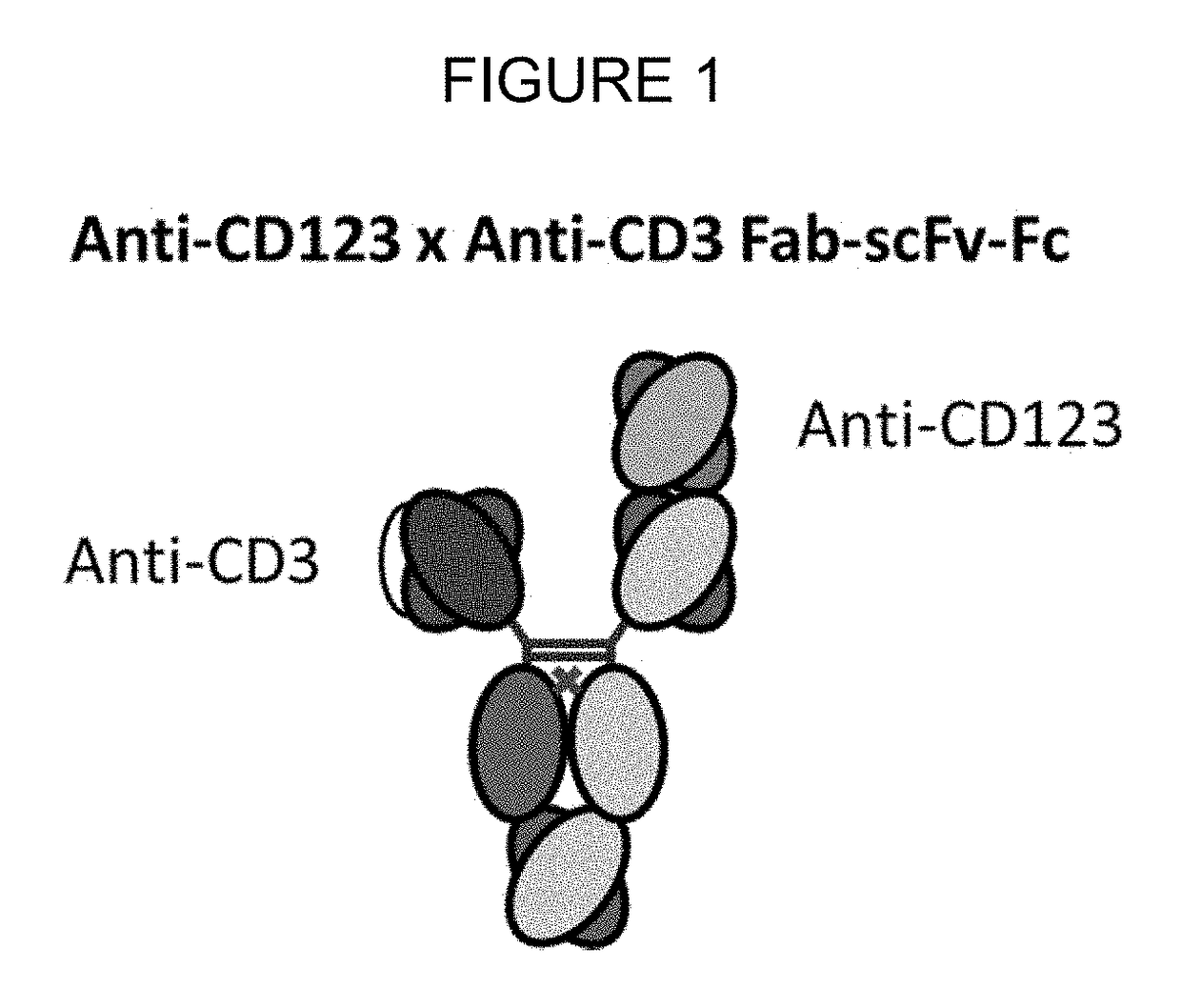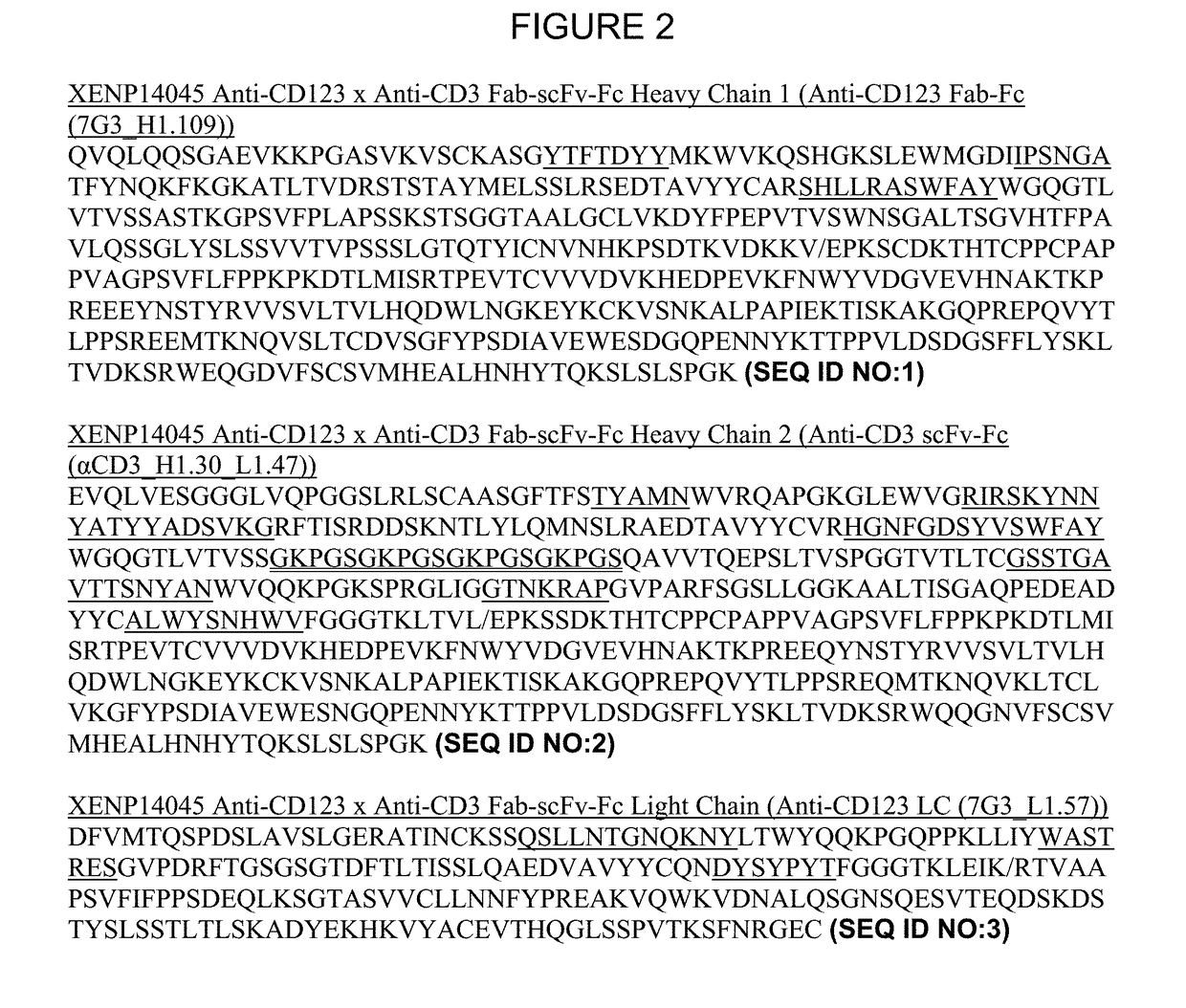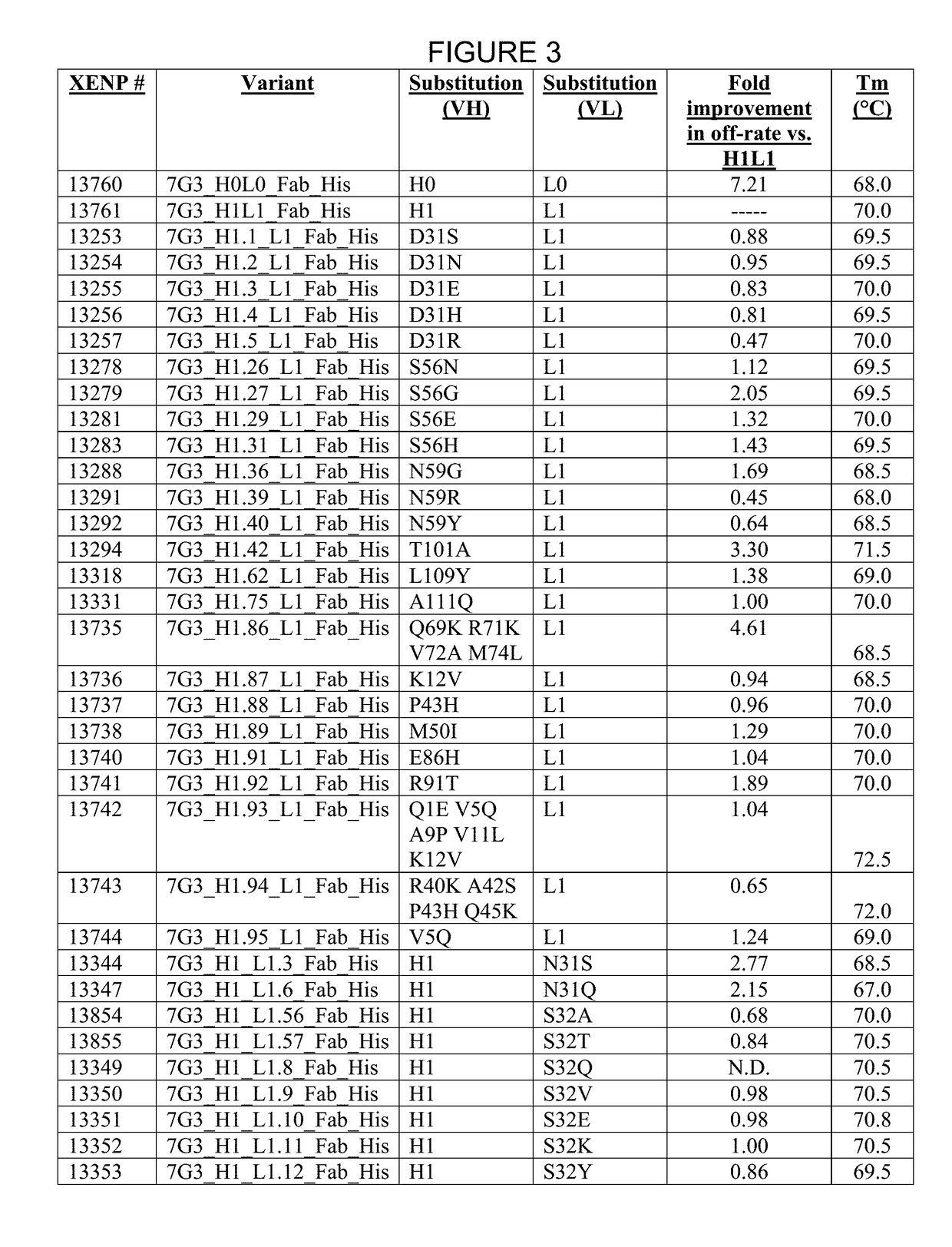Bispecific antibodies that bind cd123 and cd3
a technology of cd123 and cd3, which is applied in the field of bispecific antibodies that bind cd123 and cd3, can solve the problems of affecting the production and stability of antibodies, the inability of antibody fragments to have the constant region of the antibody with its associated functional properties, so as to improve the effect of side effects
- Summary
- Abstract
- Description
- Claims
- Application Information
AI Technical Summary
Benefits of technology
Problems solved by technology
Method used
Image
Examples
example 1
XENP14045 Treatment Plan
[0150]This is a multicenter, open-label, multi-dose, single-arm, Phase 1, dose-escalation study of XENP14045. The dose of XENP14045 will be administered IV over a 2-hr infusion period. Modifications of the dose infusion period may occur based on any observed infusion toxicity.
[0151]This study will be conducted in 2 sequential parts, Parts A and B.
[0152]Part A: Patients will be enrolled in up to 8 consecutive dose cohorts (0.003, 0.01, 0.03, 0.075, 0.15, 0.3, 0.5, and 0.75 μg / kg) with initial accelerated titration for the first 3 cohorts. The first 3 cohorts will consist of 1 patient each until there is evidence of a Grade 2 toxicity, and the remaining cohorts will enroll at least 3 patients each in a classic 3+3 dose escalation scheme. Patients will be admitted for 3 days for the first and fourth doses (and 2 days for the second dose, if admission is necessary to collect cytokine / inflammatory factors for the 8 hr postinfusion timepoint) for observation, PK, P...
example 2
[0170]T cell-dependent cytotoxicity of XmAb14045 against CD123-positive (KG1a and Kasumi-3) and CD123-negative (Ramos) cell lines was examined using purified PBMC or T cell-depleted PBMC as effector cells. In addition, T cell activation was assessed by quantifying CD69 induction (a marker of lymphocyte activation) on both CD4+and CD8+ T cells. XENP13245, an anti-RSV x anti-CD3 bsAb, was used as a control. XmAb14045, but not XENP13245, showed robust and potent killing of the CD123+ KG-1a (EC50 of 0.28 ng / mL; see FIG. 8) and Kasumi-3 (EC50 of 0.01 ng / mL) cell lines when supplied with human PBMC as an effector population along with robust CD69 induction in both CD4+ and CD8+ T cells. However, when T cells were depleted from PBMC (FIG. 8), XmAb14045 failed to induce killing or induce CD69 expression on T cells. XmAb14045 did not induce cytotoxicity of the CD123− Ramos B cell line or induce T cell activation as measured by CD69 expression.
[0171]A series of stud...
example 3
Antitumor Activity in a Mouse AML Xenograft Model
[0176]The anti-tumor activity of varying doses of XmAb14045 was examined in NSG mice that were engrafted systemically with KG1aTrS2 cells and normal human PBMCs. KG1aTrS2 cells are derived from the AML cell line KG1a, and have been engineered to express luciferase to allow quantification of tumor burden. Mice received 1×106 KG1aTrS2 cells IV on Day 0. Twenty-two days after injection of KG1aTrS2 cells, mice were engrafted intraperitoneally (IP) with 10×106 PBMC and were treated with 0.03, 0.1, 0.3 or 1.0 mg / kg of XmAb14045 or vehicle once a week for 3 consecutive weeks. Tumor burden was monitored throughout the study by in vivo imaging (FIG. 14). As shown in FIG. 14 and FIG. 15, mice receiving KG1a cells alone or KG1a cells plus PBMC displayed steadily increasing AML burden over time. In contrast, all tested dose levels of XmAb14045 began reducing tumor burden approximately 3 days after the initial dose, ultimately reducing burden by a...
PUM
| Property | Measurement | Unit |
|---|---|---|
| Time | aaaaa | aaaaa |
| Time | aaaaa | aaaaa |
| Time | aaaaa | aaaaa |
Abstract
Description
Claims
Application Information
 Login to View More
Login to View More - R&D
- Intellectual Property
- Life Sciences
- Materials
- Tech Scout
- Unparalleled Data Quality
- Higher Quality Content
- 60% Fewer Hallucinations
Browse by: Latest US Patents, China's latest patents, Technical Efficacy Thesaurus, Application Domain, Technology Topic, Popular Technical Reports.
© 2025 PatSnap. All rights reserved.Legal|Privacy policy|Modern Slavery Act Transparency Statement|Sitemap|About US| Contact US: help@patsnap.com



